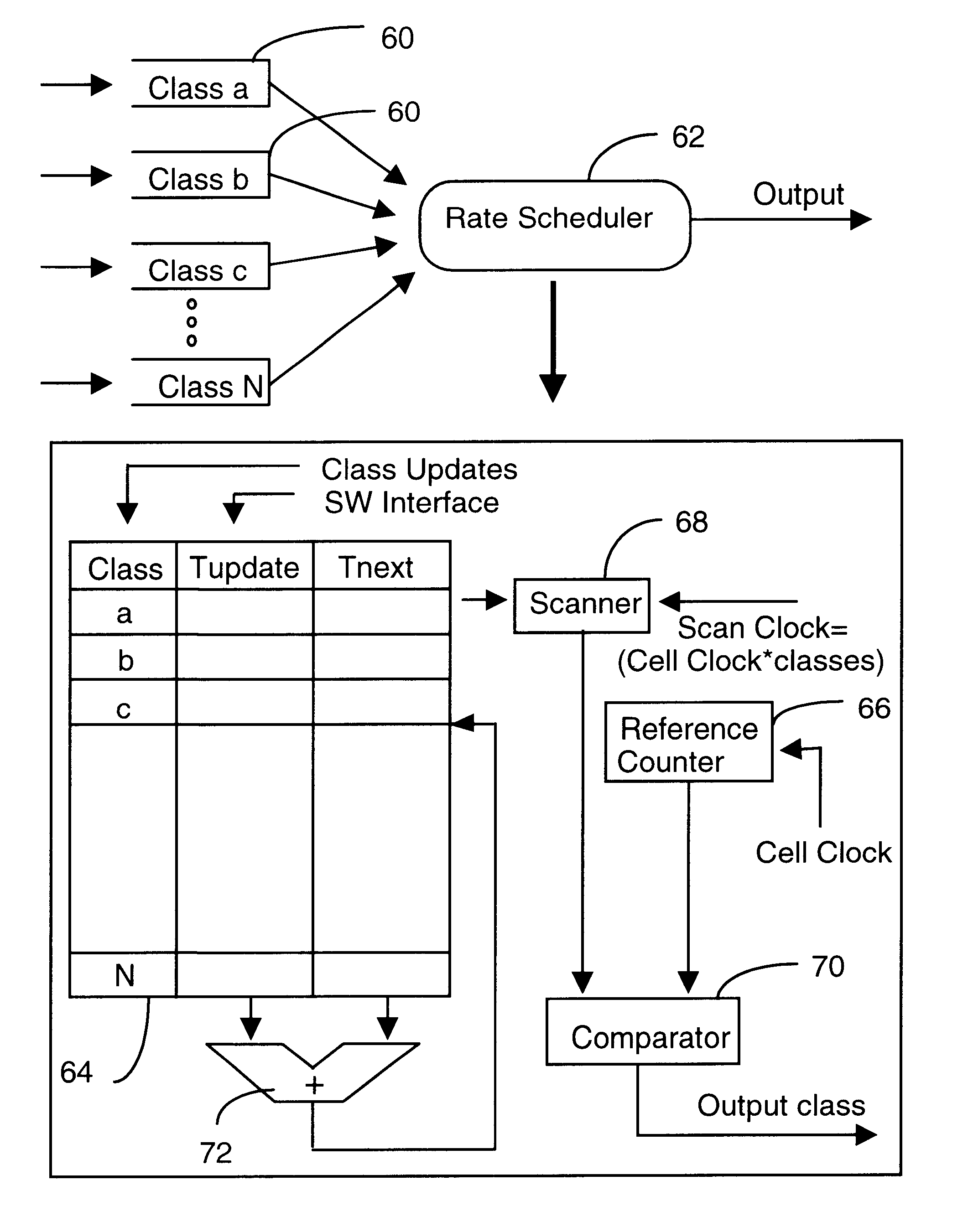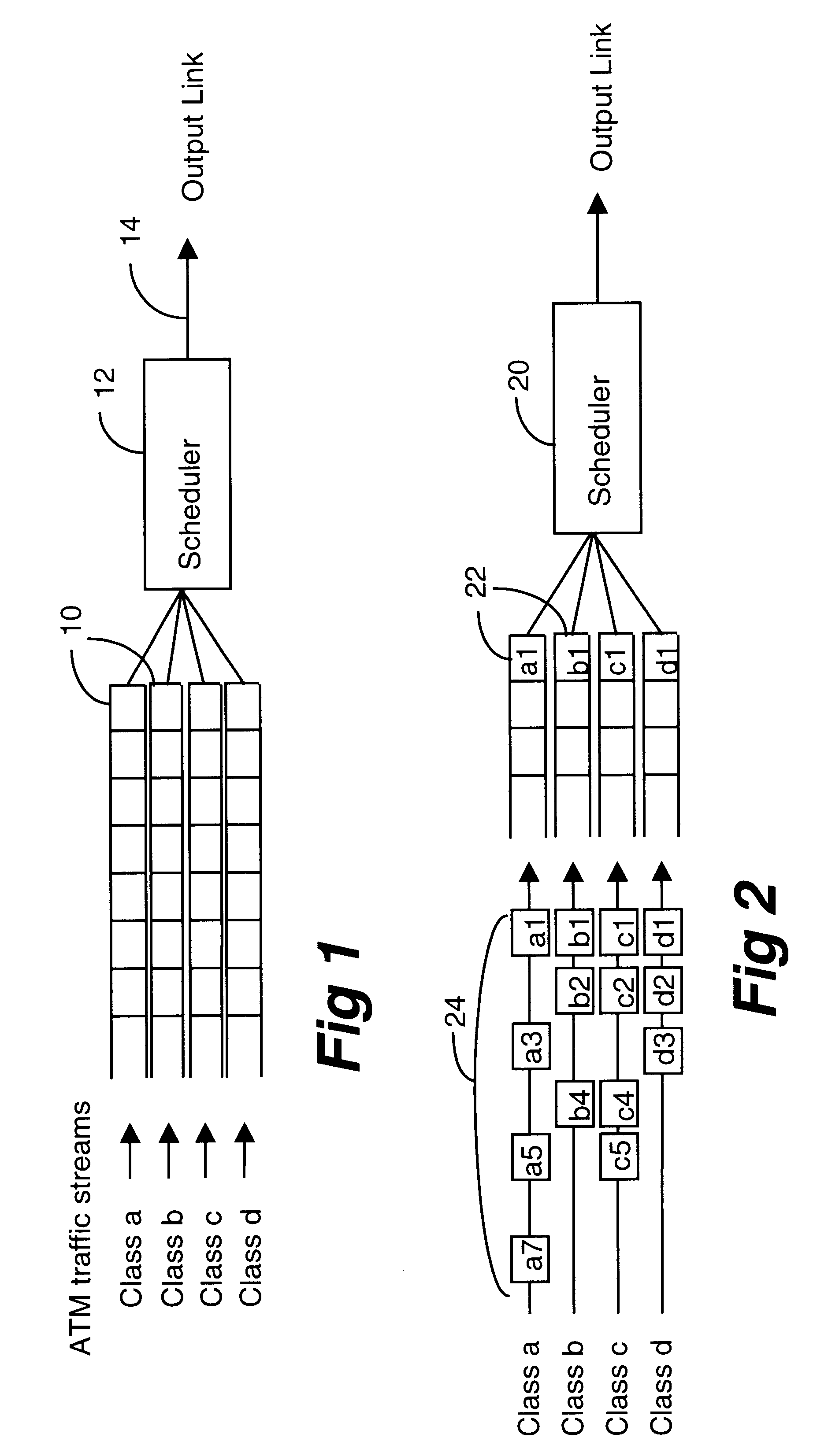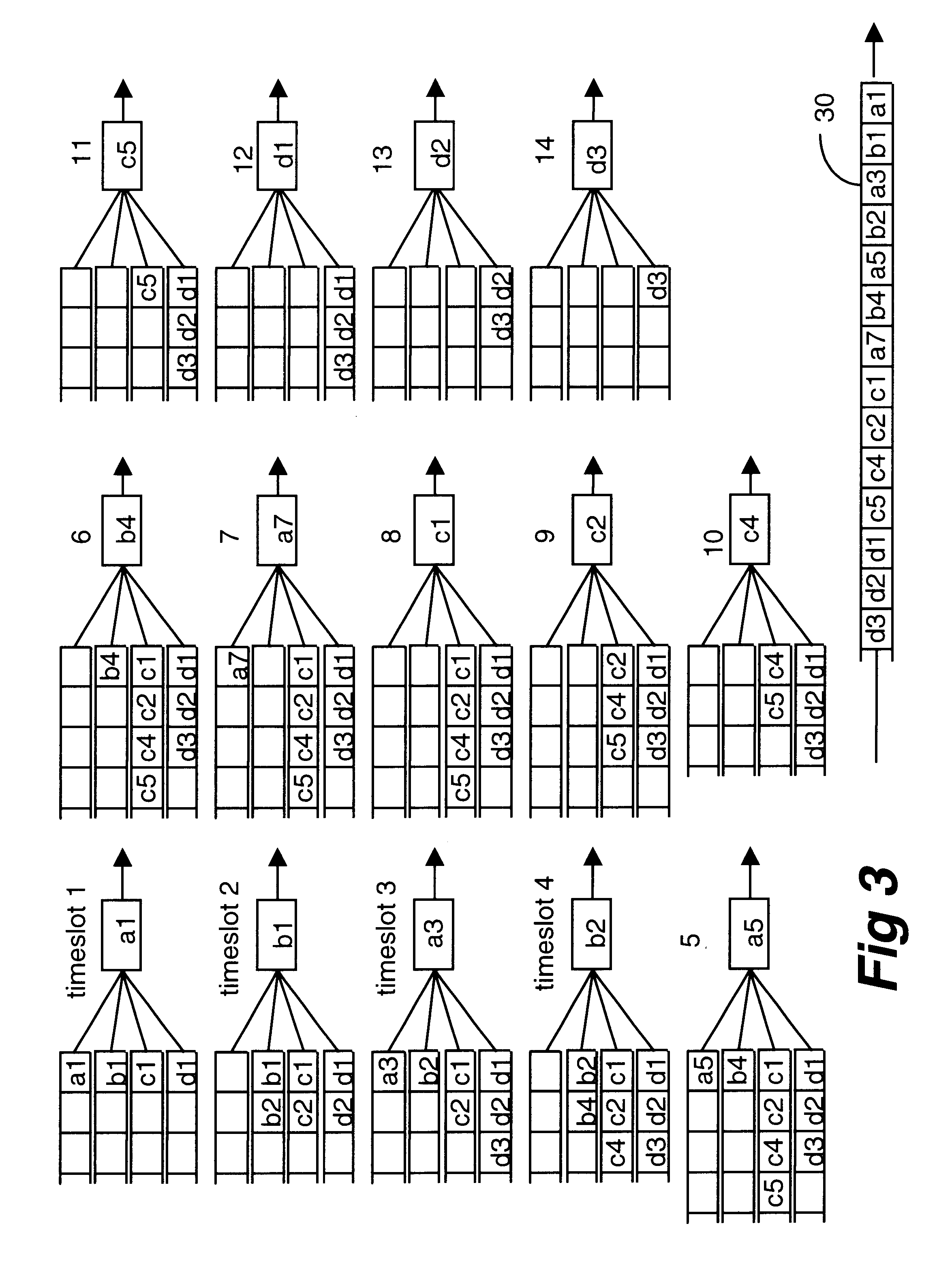Time linked scheduling of cell-based traffic
a cell-based traffic and scheduling technology, applied in the field of time linked scheduling of cell-based traffic, can solve the problems of limiting the impact of higher priority classes, unable to meet the delay and loss requirements of the lower priority class, and progressively more difficult to satisfy the delay and loss guarantees of each class
- Summary
- Abstract
- Description
- Claims
- Application Information
AI Technical Summary
Problems solved by technology
Method used
Image
Examples
Embodiment Construction
By referring to FIG. 6, the operation of a known rate based scheduler is described. In this scheduler, all the traffic classes are scanned in every cell interval (timeslot). It should be noted that it is assumed the cell interval corresponds to a timeslot in the following description. As will be described later in connection with further embodiments, they can be different from one another. This scheme therefore can be conveniently called the time scan approach. Cells which have arrived are buffered in respective queues 60 according to their traffic class. The rate scheduler 62 of this scheme includes a scheduling table 64 which hold fields called Tnext and Tupdate for each traffic class. A cell reference counter 66 increments once per cell interval (timeslot) during which interval a scanner 68 scans through Tnext field of the scheduling table to decides which class is to be serviced. Tnext is the next timeslot a cell is to go out. The scanner and the reference counter are compared a...
PUM
 Login to View More
Login to View More Abstract
Description
Claims
Application Information
 Login to View More
Login to View More - R&D
- Intellectual Property
- Life Sciences
- Materials
- Tech Scout
- Unparalleled Data Quality
- Higher Quality Content
- 60% Fewer Hallucinations
Browse by: Latest US Patents, China's latest patents, Technical Efficacy Thesaurus, Application Domain, Technology Topic, Popular Technical Reports.
© 2025 PatSnap. All rights reserved.Legal|Privacy policy|Modern Slavery Act Transparency Statement|Sitemap|About US| Contact US: help@patsnap.com



